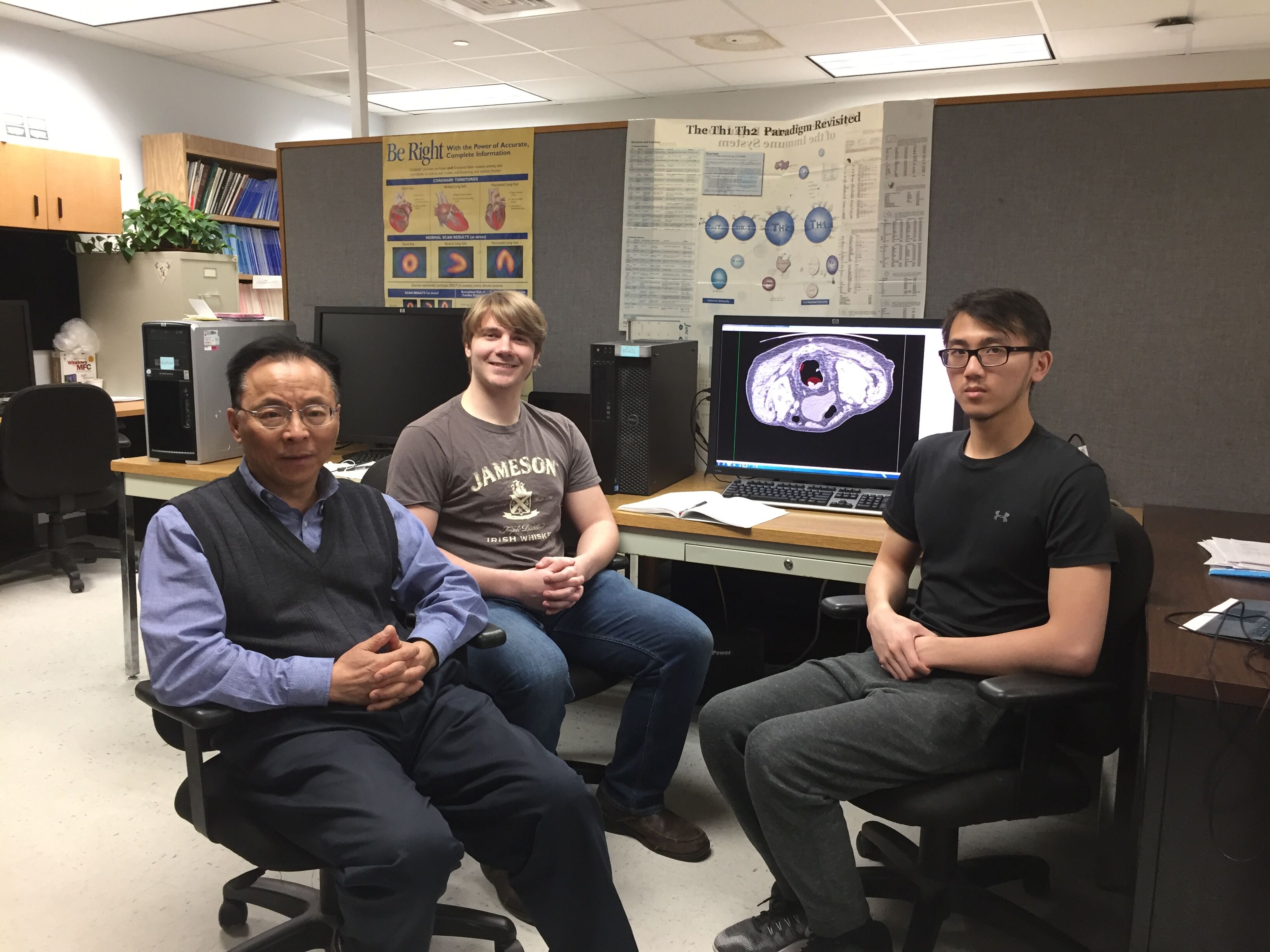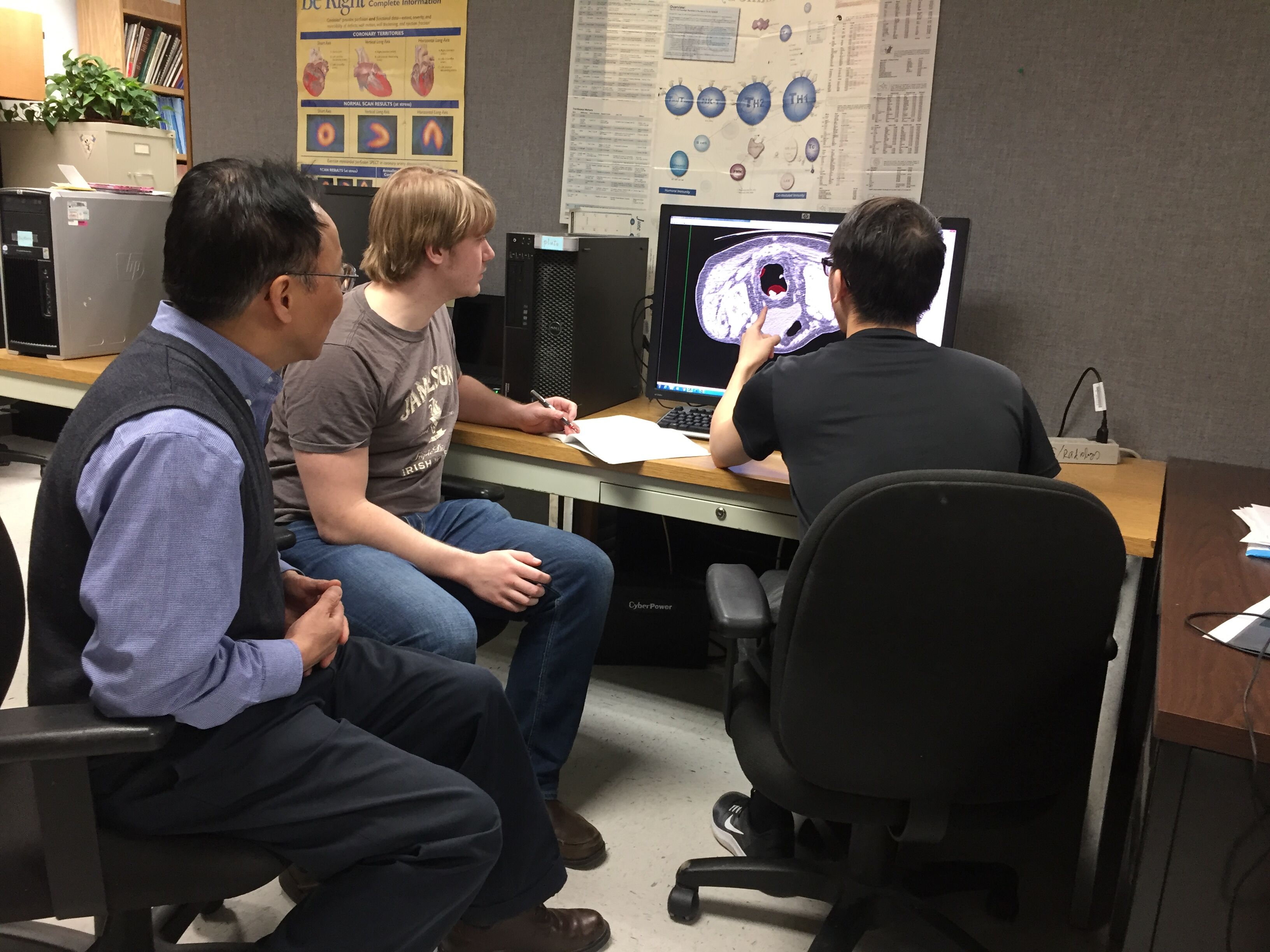Kenneth Ng Receives University Undergraduate Recognition Award
March 26, 2019
ECE students don’t just work in traditional electrical and computer engineering areas but work as well in a wide variety of inter-disciplinary areas. Kenneth Ng, a senior ECE student, recently received a university Undergraduate Recognition award for his work in the laboratory of Professor Jerome Liang of the Radiology department.

From left to right: Professor Jerome Liang, the lab/project director; Marc Pomeroy, a BME PhD graduate student; Kenneth Ng, a senior EE undergraduate student.
The following image shows "Polyp-Go," the work-in-progress of Prof. Liang’s National
Institute of Health (NIH)-sponsored R01 project "Advancing Virtual Colonoscopy for
Early Cancer Screening." This project studies the use of artificial intelligence (AI)
for polyp characterization.

The Polyp-Go model includes three components of (1) the inner volumetric model, (2) the surface model of the polyp border, and (3) the neighboring model surrounding the polyp border.
In this work, both Ken and Marc are investigating the 3rd model for the surrounding neighborhood of the polyp border. The preliminary outcome was recently presented at an international conference, named SPIE Medical Imaging. The presentation title is “Improved Polyp Classification by Inclusion of the Surrounding Colon Wall Textures.”
Professor Liang has supervised a number of ECE students, including PhD students. He
says that inter-disciplinary work is very important in his research area of medical
imaging. The area covers theoretical modeling (Physics and Applied Mathematics), model
analysis and implementation (Biomedical Engineering, Electrical and Computer Engineering,
and Computer Science), and model evaluation (Applied Mathematics). “ECE students have
good signal and image processing knowledge and good programming skills. My lab’s research
provides a wide range of tasks to use their knowledge and skill to achieve various
goals in the field of medical imaging,” Liang said.
Ken relates that he became involved in the project after applying to a listing of computer vision research. He had some background on machine learning. Ken had taken some third party online courses and wanted to dive deeper into the topic. He says “the most rewarding aspect of working on this project is broadening my understanding of machine learning, especially in computer vision, while developing meaningful relationships with my co-workers.”
Ken’s work with Professor Liang is a good example of the wide range of types of work that electrical and computer engineers can find themselves in.
